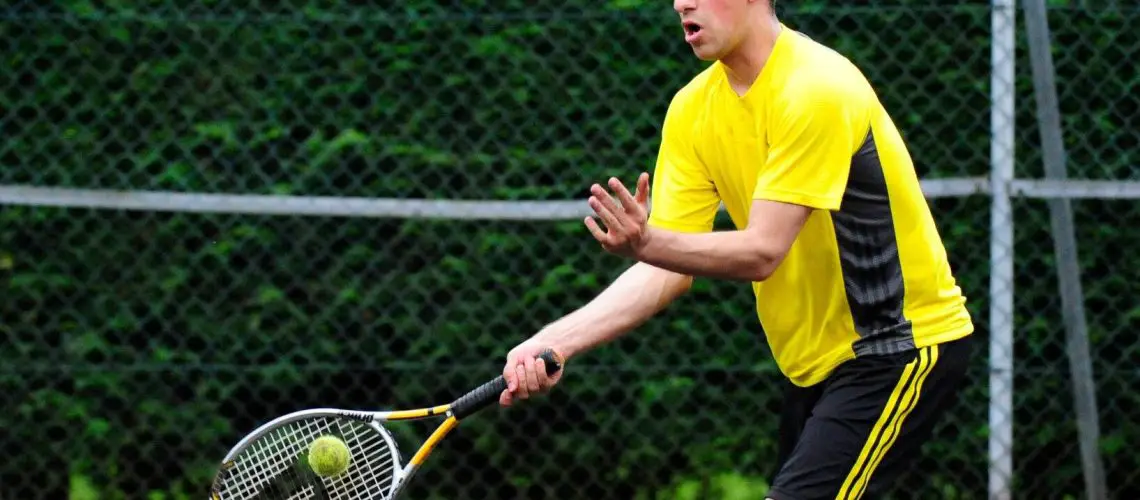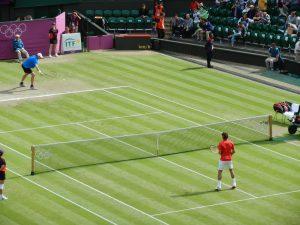We may earn money or products from the companies mentioned in this post.
Introduction

Tennis is a sport that requires precision, agility, and technique One often overlooked aspect of the game is the grip on the tennis racket The way a player holds their racket can greatly impact their performance on the court A proper grip not only enhances a player’s ability to hit powerful shots with accuracy but also plays a vital role in preventing injuries In this article, we will explore the importance of having the right grip in tennis and delve into the different types of grips commonly used by players
Importance of Proper Grip in Tennis
1 Enhances Performance:
A good grip allows players to have better control over their shots, enabling them to make precise contact with the ball and direct it where they want it to go By holding the racket correctly, players are able to generate more power and spin on their shots, giving them an advantage over their opponents
2 Prevents Injuries:
The correct grip helps distribute forces evenly throughout the hand and arm, reducing strain on specific muscles and joints This can help prevent common tennis-related injuries such as tennis elbow or wrist strains Additionally, a proper grip ensures that players maintain a relaxed yet firm hold on the racket, minimizing excessive tension in the hand and forearm
Brief Overview of Different Grips
1 Eastern Grip:
The Eastern grip is one of the most widely used grips in tennis It involves placing your base knuckle (the knuckle at the base of your index finger) on bevel 3 (the third bevel from the top) of the racket handle This grip provides excellent control for flat shots and allows players to generate topspin when needed
2 Semi-Western Grip:
The Semi-Western grip is popular among modern players, especially those who prefer to hit with topspin It involves placing the base knuckle on bevel 4 (the fourth bevel from the top). This grip allows for greater wrist movement and generates more spin on shots, making it effective for hitting high-bouncing balls and powerful topspin groundstrokes
3 Western Grip:
The Western grip is characterized by placing the base knuckle on bevel 5 or even further towards the bottom of the handle This extreme grip is often used by players who prefer heavy topspin shots and want to generate maximum spin on their forehands While it provides great topspin potential, it may limit control over flat shots and can put extra strain on the wrist
By understanding and experimenting with these different grips, tennis players can find the one that suits their playing style and maximizes their performance on the court
Finding the Right Grip for Your Playstyle

When it comes to tennis, finding the right grip is crucial for maximizing your performance on the court It’s not just about holding the racket correctly; it’s also about understanding your personal preferences and strengths By identifying these factors, you can tailor your grip to suit your playstyle and enhance your overall game
Identifying Personal Preferences and Strengths
One of the first steps in finding the right grip is recognizing your personal preferences and playing style Are you an aggressive baseline player who relies on powerful groundstrokes? Or do you prefer an all-court game, utilizing a combination of volleys, slices, and drop shots to keep your opponents off balance?
If you lean towards aggressive baseline play, a semi-western or western grip might be ideal These grips provide more topspin and allow you to generate greater power from the back of the court On the other hand, if you prefer playing an all-court game, a continental or Eastern grip might give you better control over various shot types
Assessing Your Skill Level and Experience
In addition to personal preferences, it’s important to consider your skill level and experience when choosing a grip If you’re a beginner or have limited experience with tennis, it may be beneficial to start with a basic continental grip as it offers versatility across different shots
As you become more comfortable with the basics of tennis and gain experience on the court, you can experiment with different grips that align with your desired playstyle Remember that finding the right grip is an ongoing process that may require adjustments as you progress in your tennis journey
By crafting engaging paragraphs using natural language and incorporating relevant information about identifying personal preferences and strengths as well as assessing skill level and experience when finding the right grip for a specific playstyle, this article aims to provide readers with valuable insights and guidance
Detailed breakdown of each grip type

Eastern Grip
The Eastern Grip, also known as “The Shakehands Grip,” was first popularized by Bill Tilden in the early 20th century To hold an Eastern grip, you need to locate the bevels on the racket handle and align your base knuckle with the third bevel from the top Your thumb can either be directly behind the handle or wrapped around it slightly
This grip offers several advantages, including flat and powerful groundstrokes It is particularly suitable for serve-and-volley players However, a disadvantage of this grip is limited topspin generation
Semi-Western Grip
The Semi-Western Grip gained popularity through Jimmy Connors in the late twentieth century To hold this grip, you need to locate the bevels on the racket handle and align your base knuckle with the fourth bevel from the top Your thumb placement can be directly behind the handle or slightly wrapped around it
The Semi-Western Grip offers greater topspin production and is effective for high bouncing balls However, it may pose difficulties when dealing with low balls and may have slightly less power on flat strokes
Western Grip
The Western Grip was popularized by Rafael Nadal and other clay court specialists To hold this grip, you need to locate the bevels on the racket handle and align your base knuckle with the fifth bevel from the top Similar to other grips, your thumb placement can either be directly behind or slightly wrapped around the handle
One of its major advantages is maximum topspin production, making it highly effective for high bouncing balls However, this grip may present challenges when generating pace on flat shots and may not be as effective for serve-and-volley play
Transitioning between grips

In the fast-paced sport of tennis, being able to switch grips quickly is of utmost importance It allows players to adapt to different shot types, such as forehand, backhand, and volley, with ease Each shot requires a specific grip that maximizes control and power By mastering grip transitions, players gain the versatility needed to execute a wide range of shots effectively
Furthermore, transitioning between grips is essential for adapting to opponents’ strategies on the court Tennis is not just about hitting the ball; it’s about outsmarting your opponent as well A skilled player will vary their shot selection and placement to keep their opponent off balance Switching grips seamlessly enables players to adjust their technique on the go and counteract their opponents’ tactics effectively
Tips for improving grip transitions:
-
Practice drills:
One effective way to improve grip transitions is through targeted practice drills These drills can focus on specific grip changes or simulate game-like situations where quick adjustments are required By incorporating these drills into regular training sessions, players can enhance their muscle memory and become more proficient at switching grips effortlessly -
Develop muscle memory through repetition:
Like any skill in sports, developing muscle memory plays a crucial role in improving grip transitions The more frequently a player practices transitioning between grips, the smoother and faster they will become at making those changes during actual matches Repetition helps ingrain the movements into the subconscious mind, allowing players to perform fluid grip transitions without consciously thinking about them
In conclusion,
Useful Links

How to measure your tennis grip size
How to Grip a Tennis Racket (with Pictures)
Tennis grips
How to Hold Your Tennis Racket (4 Different Grips)
Do You Hold A Tennis Racket With Two Hands?
Tennis Racquet Grip Sizes | How-To Guide With Chart & …
Easy power. From 1 to 10, how tight do you grip your racket …
How To Measure Grip Size
5 Important Tips You Need to Try Now to Improve Your …
Tennis
Two-handed backhand grip and swing for beginner players
Regrip a Tennis Racket: It’s Easy to Do!
How to Hold a Tennis Racket When Volleying
How to Regrip a Tennis Racket: 8-Step Grip Replacement …
The Tennis Grip Guide by Tennisbuilder | Designed for …
How Tennis Racket Grip Sizes Are Measured
ON YOUR OWN: TENNIS; Subtle Steps to a Better Grip on …
Forehand Tennis Grips
Wrap an Overgrip on a Tennis Racket





